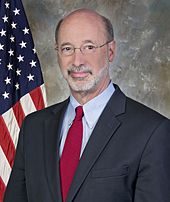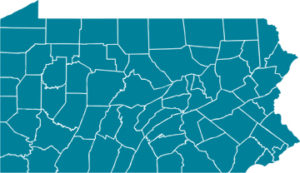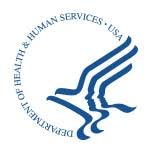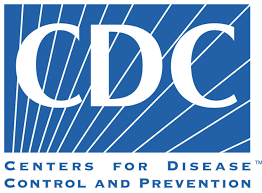COVID-19 Update: Friday, January 8
The following is the latest COVID-19 information from the state government as 2:00 p.m. on Friday, January 8.
Department of Health
 The Department of Health has updated the state’s COVID-19 vaccination plan.
The Department of Health has updated the state’s COVID-19 vaccination plan.- The Department of Health issued an advisory with indications and contraindications for COVID-19 vaccines as well as vaccine adverse events monitoring and reporting.
- The Department of Health issued a health alert with information on the UK variant strain of COVID-19 that was detected in a patient in Dauphin County. The alert directs laboratories to submit samples fitting the description of the variant to the department. The department also issued a news release about the new variant.
- The Department of Health issued an FAQ for laboratories reminding them to provide demographic information on the COVID-19 testing submission forms they submit to the state.
- The Department of Health has written to nursing home administrators whose facilities have not yet transitioned to the state’s new electronic death registration system (EDRS) offering the state’s assistance with that transition. Go here to learn more about EDRS, which is the required platform for reporting deaths attributed to COVID-19.
- The Department of Health reports that Pennsylvania is above the average national testing rate, as noted in the White House Task Force Weekly Report dated January 3. According to the report, Pennsylvania was at the yellow level for number of tests performed per 100,000 people for the previous week. The yellow level is 2,000 to 2,999 tests per 100,000 population.
Department of Health – by the numbers
 Pennsylvania’s daily new case count generally remains at the high level it has been since mid-December but today was the state’s worst day since December 12. Yesterday the state’s total number of COVID-19 cases since the pandemic began surpassed 700,000.
Pennsylvania’s daily new case count generally remains at the high level it has been since mid-December but today was the state’s worst day since December 12. Yesterday the state’s total number of COVID-19 cases since the pandemic began surpassed 700,000.- Yesterday the state’s overall death toll since the pandemic began passed 17,000.
- The numbers of Pennsylvanians hospitalized with COVID-19, in hospital ICUs, and on ventilators remain very high but are at their lowest levels since early December.
- More than 20,000 health care workers in the state have contracted COVID-19.
- More than 66,000 long-term-care facility residents and employees have contracted COVID-19 in 1491 facilities in all 67 Pennsylvania counties.
- Currently, 13 percent of adult ICU beds in the state are unoccupied, as are 13 percent of medical/surgical beds, 16 percent of pediatric ICU beds, 23 percent of pediatric beds, and 30 percent of airborne isolation units. The proportion of unoccupied medical/surgical beds, pediatric ICU beds, and pediatric beds has declined considerably over the past three days.
- In its “Reduction of Elective Procedures” dashboard that tracks the criteria the state is using to determine whether to order hospitals to reduce or eliminate elective procedures to ensure their ability to handle possible influxes of COVID-19 patients, the state has flagged a growing staffing shortage in hospitals in the state’s Keystone health care coalition region (Adams, Bedford, Blair, Centre, Cumberland, Dauphin, Franklin, Fulton, Huntingdon, Juniata, Lancaster, Lebanon, Mifflin, Perry, Snyder, and York counties). In that region, 41 percent of the region’s hospitals anticipate a staffing shortage in the coming week – more than the 33 percent level that the state identifies as a potential problem. The overall situation in the Keystone region, however, has not reached a point where the state would direct hospitals in this region to reduce or eliminate their elective surgeries.
Resources to Consult
Pennsylvania Department of Human Services
Pennsylvania Department of Health
Centers for Disease Control and Prevention
 Department of Health Secretary Rachel Levine briefed the press yesterday about the state of Pennsylvania’s response to the COVID-19 crisis and took questions from reporters. Among the highlights of her briefing are the following points:
Department of Health Secretary Rachel Levine briefed the press yesterday about the state of Pennsylvania’s response to the COVID-19 crisis and took questions from reporters. Among the highlights of her briefing are the following points: DHS has issued a Medical Assistance bulletin informing pharmacies that
DHS has issued a Medical Assistance bulletin informing pharmacies that  The Department of State has
The Department of State has  Last week the Governor’s Budget Office released a
Last week the Governor’s Budget Office released a  According to the GAO report,
According to the GAO report, At issue are financial reporting requirements that at first directed hospitals to estimate their anticipated revenue losses and extra expenses associated with the COVID-19 pandemic in one way and then shifted to a new approach. The first grant distribution was based on the original reporting requirements, and now, hospitals fear that the change in reporting requirements could leave them vulnerable to a demand that they return some, much, or all of that grant money.
At issue are financial reporting requirements that at first directed hospitals to estimate their anticipated revenue losses and extra expenses associated with the COVID-19 pandemic in one way and then shifted to a new approach. The first grant distribution was based on the original reporting requirements, and now, hospitals fear that the change in reporting requirements could leave them vulnerable to a demand that they return some, much, or all of that grant money. The
The  CMS has updated its
CMS has updated its  HHS has updated its
HHS has updated its  The CDC has updated its
The CDC has updated its